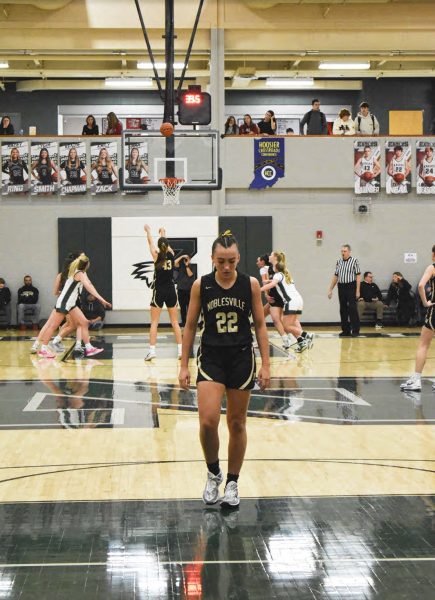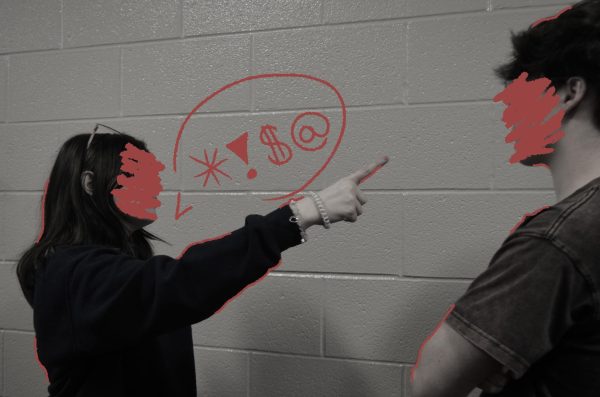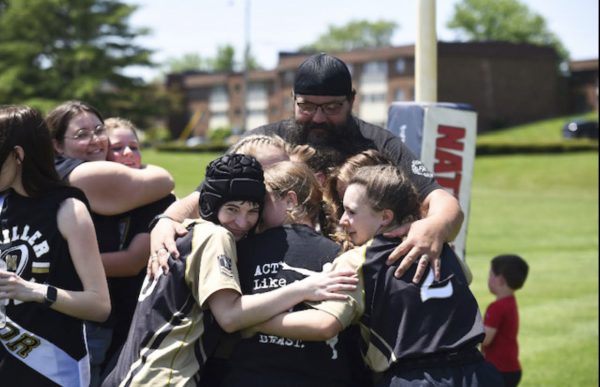Another curve to flatten: NHS seniors have a new disease to worry about
Photo by B. Freeman
May 18, 2021
As schools continue to reopen, more and more students nationwide are being exposed to a highly contagious virus. For these teens, schoolwork is the least of their priorities as the worry —or heaven forbid the symptoms— begin to set in. For the longest time, teachers and administrators have made an effort to implement procedures and guidelines to prevent the onset of this illness in their classrooms but, as we have seen, this has often been a fruitless errand thus far. Many NHS students can say that they’ve seen peers, or even have personally suffered the symptoms like fatigue, headaches, or new confusion, while others have been fortunate enough to show no symptoms. That’s right, the time of the year has come for us to fight off the spread of Senioritis, but this year, we are fighting a particularly infectious strand.
Some theorize that the strand of Senioritis we’ve seen in the past has mutated in conjunction with another illness: COVID-19. As early as March 2020, people have cited anxiety and restlessness as a result of the looming threat of COVID. Given that these are famous symptoms of Senioritis, the mere mental toll of the coronavirus has been seen as a comorbidity for the devastating Senioritis. Other theories posit that preventative measures for the novel coronavirus have, in fact, bolstered the spread of Senioritis. Social distancing and mask-wearing have obstructed social interaction among teens, a key remedy for Senioritis symptoms. Synchronous learning has also enforced that students stay at home, rendering them to the unmotivating comfort of their bedrooms. Make no mistake, this is where the risk of Senioritis is the highest. One may say that while COVID-19 spreads best in the closed rooms of parties and schools, Senioritis lurks in the breakout rooms of our Zoom meetings.
Senioritis infects virtually every senior with the aforementioned symptoms of anxiety, fatigue, and a lack of motivation. Naturally, this should be of great concern for seniors, a population who needs to finish schoolwork strong before graduation. However, seniors are typically quick to brush it off, saying that it is merely a worse version of boredom. This may sound familiar to those who have been hearing the phrase, “It’s just a worse version of the flu.”
It isn’t.
So, why are students so unbothered? This is a result of the most perilous symptom of Senioritis: complacency. Yet another way the coronavirus has mutated Senioritis, complacency has been seen well beyond our high school campuses. In any grocery store, mall, or even Capitol Hill riot, people can be seen without masks, showing no regard for public health and safety. If a lack of concern for respiratory disease is becoming a growing trend, how can seniors expect to care about the yearly infection of our work ethic?
Throughout history, there has always been one sure-fire cure for Senioritis: graduation. To simply be done with it all. This year, a select few have opted to receive this cure after one semester of senior year. This, however, is nowhere near enough to reach herd immunity from Senioritis. In fact, it has proven to worsen the symptoms of the affected population. As seniors watch their peers enjoy life off-campus, essentially “vaccinated” from Senioritis, the relatively new symptom of envy begins to set in as Senioritis brings their thoughts even further from schoolwork. Other short-term remedies have been offered, such as fully synchronous learning or taking “mental health breaks,” though there is insufficient data to prove the effectiveness of these treatments.
Regardless of what kind of schedule a senior has chosen, Senioritis comes for everyone. Luckily, the mortality rate of the disease is zero percent, though to fight through the symptoms is always trying. For now, health specialists are testing the treatment of “emotional support.” There is strong evidence to suggest that checking up on fellow seniors and being there for them through such a bizarre and difficult time does relieve some of the pressure of this new strand of Senioritis. While this has been a common practice for all years of school, it may just be our best line of defense until seniors are eligible to receive the cure in June.











